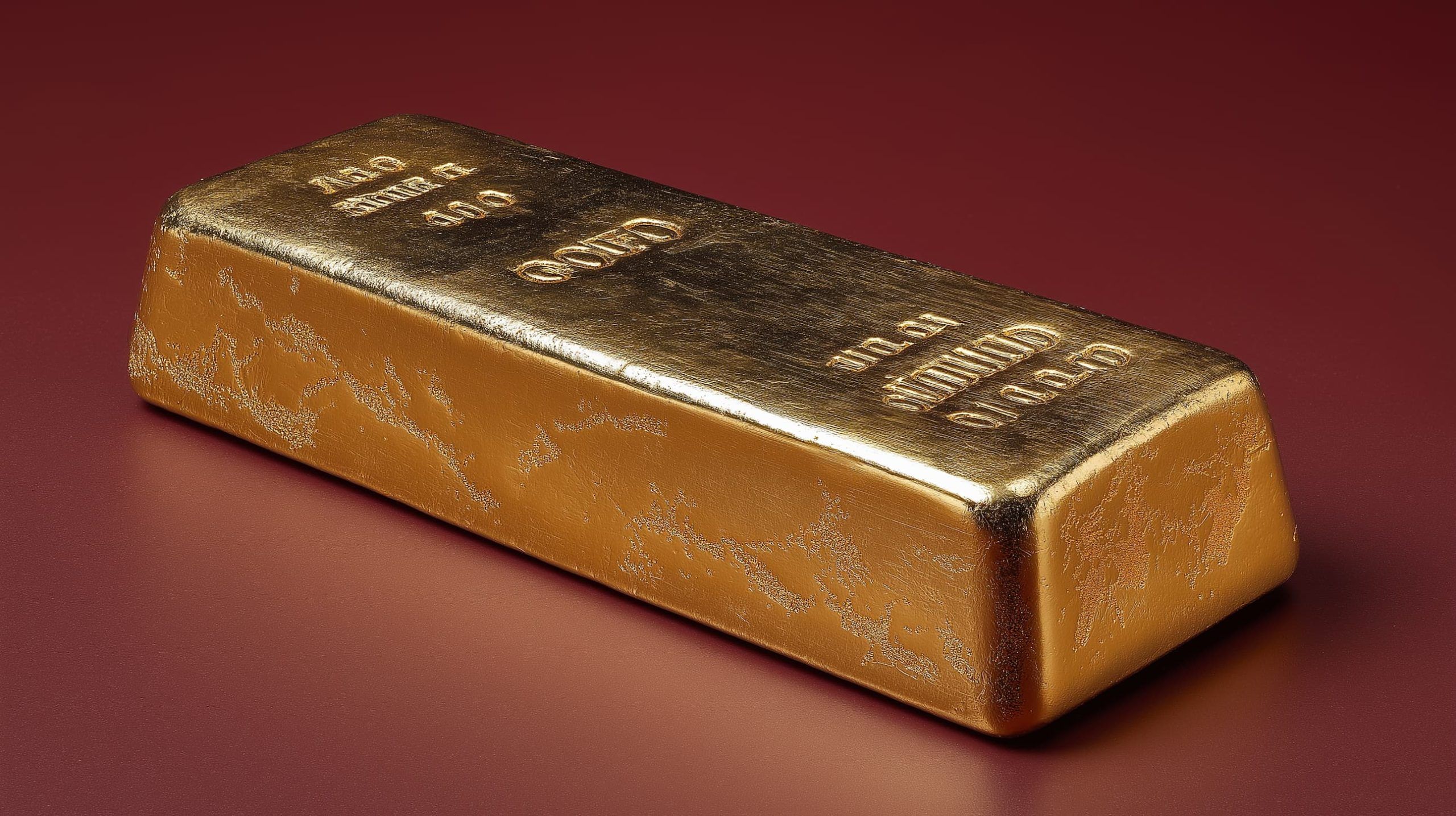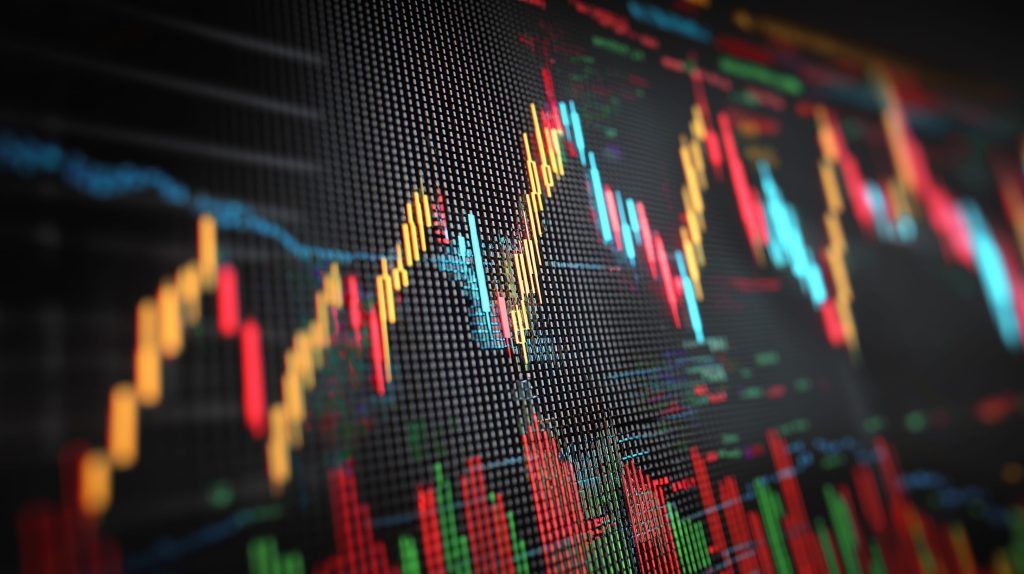Key Facts
- Gold Near Historic Highs: Gold prices surged to around $3,884 per ounce – hovering just below all-time records near $3,896 – after climbing over 3% this week, marking a seventh straight weekly gain [1]. Bullion is up an astonishing ~47% year-to-date amid a broad safe-haven rally [2].
- Silver at 14-Year Peak: Silver prices breached $47 an ounce for the first time since 2011, riding the coattails of gold’s rally [3]. The metal is up 63% this year and approaching its record high of $49.51, supported by robust industrial demand and tight supplies [4] [5].
- Platinum & Palladium Climb: Platinum hit roughly $1,600/oz – a 12-year high – before slight profit-taking [6]. It has rallied about 75% in 2025 on recovering auto demand and supply deficits. Palladium, around $1,250/oz, is up ~25% this year [7] but remains far below its 2022 peak as EV adoption and platinum substitution temper its gains [8].
- Macro Safe-Haven Drivers: A U.S. government shutdown entering its third day fed uncertainty, halting economic data releases (including October’s jobs report) and putting the U.S. dollar under pressure [9] [10]. Coupled with cooling labor market indicators, this bolstered expectations for imminent Federal Reserve rate cuts, a classic boon for non-yielding assets like gold [11] [12].
- Geopolitical Jitters: Ongoing conflicts – from the war in Ukraine to renewed Middle East tensions – have fueled safe-haven buying [13]. Political drama in Washington is also in focus: President Donald Trump’s reported attempt to fire a Fed governor spurred fears about Fed independence, adding to gold’s allure as a hedge against political risk [14] [15].
- Bullish Analyst Calls: Market experts are increasingly bullish. UBS now forecasts gold will “rise to $4,200” in coming months as real rates fall and the dollar weakens [16]. HSBC likewise said gold could trade above $4,000 “in the near term,” citing geopolitical risks and fiscal uncertainty [17]. Societe Generale sees prices “passing through $4,000/oz by the turn of the year” if uncertainty persists [18].
- Mining & Industry Moves: In the mining sector, both Newmont and Barrick – the world’s top gold producers – announced leadership changes this week, with longtime CEOs Tom Palmer and Mark Bristow stepping down [19]. Meanwhile, supply constraints loom large: the World Platinum Investment Council projects a third consecutive platinum deficit (~850,000 oz in 2025) as mine output lags demand [20] [21]. Similarly, silver is on track for a fifth annual supply shortfall despite higher output, and central banks remain voracious gold buyers (15 tons added in August alone) [22] [23].
Gold’s Historic Rally and Trading Trends
Gold’s relentless climb accelerated through the first days of October, pushing the metal to fresh all-time highs just shy of $3,900 per ounce. By Friday, spot gold was holding near $3,884 – up about 0.7% on the day and more than 3% for the week [24]. This marked gold’s seventh consecutive weekly gain, capping an extraordinary year-to-date run of roughly +47% [25]. U.S. gold futures similarly settled above $3,900/oz for the first time [26]. The rally has been nothing short of historic – gold has doubled in price since late 2023 – and traders are now eyeing the symbolic $4,000 level within reach.
Behind the dramatic price action, trading has seen bursts of volatility. Mid-week, gold briefly spiked to an intraday record near $3,922 after weak U.S. jobs data, before paring gains on mild profit-taking [27] [28]. But overall momentum remains firmly to the upside. “We are now seeing increased appetite from Western investors, both institutional and retail, as a case of ‘FOMO’ kicks in,” noted analysts at broker SP Angel, who said that if this trend continues, “we would not be surprised to see gold prices break above $4,000/oz” [29] [30]. Indeed, gold’s steep ascent has repeatedly defied pullbacks – it has notched eight new record highs since September according to technical analysts [31] [32]. Any dips have so far been shallow, met by robust safe-haven demand.
Macroeconomic and Policy Drivers
Safe-haven flows into precious metals are being supercharged by a confluence of macroeconomic factors. Chief among them is the tumult in Washington, where a U.S. government shutdown took effect at the start of October. The budget impasse in Congress has partially shuttered federal operations – now several days ongoing – and cast a cloud over the U.S. economy [33]. Past shutdowns have dented investor confidence in U.S. assets, and this episode is proving no different. “Usually, when the government shuts down, the mood turns quite negative on the U.S.,” explains Edward Meir, a metals analyst at Marex, noting that the U.S. dollar tends to come under pressure during such standoffs [34]. In fact, the dollar index weakened modestly this week, making gold (priced in USD) cheaper for overseas buyers [35]. Meir added that the lack of a fiscal agreement – President Trump and Congress were still sparring over funding – has markets bracing for economic fallout, which only enhances bullion’s appeal as a safe store of value [36].
Compounding the uncertainty, the shutdown has frozen U.S. economic data releases. Crucially, the Labor Department’s non-farm payrolls report for September – originally due October 3 – was postponed because statistical agencies went dark [37]. “Jobs data goes dark” means traders lost a key gauge of the economy [38]. In the absence of official data, investors leaned on alternative indicators pointing to a cooling labor market [39]. For instance, a private ADP employment report shocked markets by showing 32,000 jobs lost in September (vs. expectations of +50,000) [40] [41]. This mounting evidence of economic slowdown has fortified expectations that the Federal Reserve will pivot to rate cuts much sooner rather than later.
Indeed, futures markets now overwhelmingly bet the Fed will resume easing interest rates at its next meetings. By this week, traders were pricing in a 97–99% probability that the Fed delivers a 0.25% rate cut in October, and high odds of another cut by December [42] [43]. Such dovish shifts are manna for gold: lower rates reduce the opportunity cost of holding non-yielding assets, and they tend to weaken the dollar. “A slowing economy and lower interest rates are bullish for gold,” Meir noted, emphasizing that expectations of an imminent Fed rate reduction were a key driver behind gold’s surge [44]. The Fed already cut rates for the first time this year in September, and with inflation readings like the PCE index coming in tame [45], markets are confident more easing is on the way. Gold thrives in this environment – as one trader quipped, “gold’s bull run feeds on bad economic news.”
Notably, the shutdown itself has removed some “good news” that might have hurt gold. With agencies closed, official reports on jobs, GDP, and other data are delayed, effectively “starving markets of data” and leaving little to derail the rate-cut narrative. “The longer the government stays shut down, that’s going to be a steady bullish element for the gold market,” observed Jim Wyckoff, senior analyst at Kitco Metals, adding that conversely “if they [in Washington] happen to have a surprise weekend agreement to open back up, that would probably be bearish” for gold [46]. As of the weekend, no such deal had materialized – the Senate’s votes on competing funding plans failed to end the impasse [47]. The upshot: economic clouds and policy uncertainty are hanging over markets, feeding directly into safe-haven demand for precious metals [48] [49].
Geopolitical and Currency Factors
Beyond economics, geopolitical tensions continue to underpin precious metals. The protracted war in Ukraine grinds on with no clear resolution, exemplified by Russia’s latest claims of battlefield gains in eastern Ukraine [50]. In the Middle East, an ongoing conflict in Gaza – where Israeli forces have been battling Hamas militants – has unsettled the region and drawn international attention [51]. Investors typically flock to gold during such periods of geopolitical strife, viewing it as a reliable store of value when geopolitical risk is elevated [52].
Political intrigue in the U.S. has added another layer of uncertainty. Notably, reports emerged that President Donald Trump attempted to fire Federal Reserve Governor Lisa Cook – an unprecedented move that raised alarms about the Fed’s independence [53]. While the Fed has so far maintained its autonomy, the mere prospect of political interference in monetary policy has unnerved markets. Analysts say this has been a tailwind for gold, which benefits when trust in government and fiat institutions erodes [54]. “Growing threats to the Fed’s independence” were among the key drivers cited by HSBC in its call for gold potentially topping $4,000 [55] [56]. In short, political risk – both global and domestic – is reinforcing the flight to safety, boosting precious metal prices across the board.
Meanwhile, the U.S. dollar – which often moves inversely to gold – has been mixed but generally softer in recent weeks. Early in the week, the dollar index slipped about 0.2% on shutdown worries [57] [58], though it recovered slightly later on. With the Federal Reserve expected to ease up on rate hikes, the dollar’s blistering 2024 rally has stalled, removing a major headwind for gold and silver [59]. “The dollar is under some light pressure…certainly supporting the precious metals complex,” noted David Meger, director of metals trading at High Ridge Futures [60] [61]. In addition, other currencies like the euro and yen have been volatile, leading some investors to diversify into gold as an alternative currency. The overall picture is one where currency volatility and geopolitical anxiety are making precious metals an attractive harbor. As strategist Stephen Innes put it, gold’s gains are “historic and unnerving” and may represent “a deliberate recalibration of the global order” – a warning that the world’s financial landscape is shifting in favor of hard assets [62].
Market Commentary and Analyst Outlook
With gold and its peers on a tear, market watchers are scrambling to assess how far this rally can run. An increasing number of analysts and banks believe gold’s hot streak has more room to climb. UBS released a note projecting gold prices to reach roughly $4,200/oz in the coming months, citing falling real interest rates in the U.S. and expectations of further U.S. dollar weakness as major tailwinds [63]. HSBC likewise struck an emphatically bullish tone: the bank said gold “could trade above $4,000 per ounce in the near term” given the mix of geopolitical risks, fiscal uncertainties, and concerns about the Fed’s independence [64].
Other prominent analysts have made similar calls. Societe Generale’s commodities research head Michael Haigh noted that as long as uncertainty remains elevated, investment flows into gold are likely to continue. “As long as uncertainty levels are high, ETF flows should continue… I see gold prices passing through $4,000/oz by the turn of the year,” Haigh told Reuters [65]. Meanwhile, SP Angel and High Ridge Futures pointed out that “fear of missing out” has gripped even Western investors who were previously underweight gold [66] [67]. This has led to a virtuous cycle for bulls – each record high seems to attract new buyers rather than spark selling. “Investors are navigating everything from shifting Fed policy to global political developments, and gold is playing its traditional role as a store of value,” said Joseph Cavatoni, a senior market strategist at the World Gold Council, adding that what’s notable is how “safe-haven demand is layered on top of structural allocation trends” like central banks and long-term investors increasing their gold holdings [68] [69]. In other words, gold isn’t just reacting to the latest crisis; it is also becoming a core portfolio holding for many – a fundamental shift that could support prices longer term.
Bullish sentiment is not limited to gold. Silver has many advocates expecting outsized gains due to its dual role as a precious and industrial metal. Some on Wall Street are even invoking comparisons to palladium’s historic run last decade, speculating whether silver could follow suit with a multi-fold increase in coming years if industrial demand surges [70] [71]. For now, major institutions haven’t put out $50+ silver targets publicly, but the metal’s rapid climb to ~$48 has certainly caught the market’s attention.
To be sure, a few voices urge caution that the precious metals complex may be overheating in the short term. Technical indicators show extreme readings – one analysis noted gold’s momentum is at its most “overbought” level since 1980, a potential sign that a pullback could occur [72]. “Prices have rallied sharply in recent months…Gold now sits at its highest [RSI] reading since at least 1980,” wrote analyst Abu (Khan) at Barchart, referring to the Relative Strength Index gauge [73]. Nonetheless, most analysts agree that any correction is likely to be minor unless the macro backdrop shifts dramatically. Kitco’s weekly gold survey found that both Wall Street professionals and Main Street investors remain predominantly bullish going into next week, seeing little reason to doubt gold’s march higher in the current environment (especially with U.S. economic data still on hold due to the shutdown) [74] [75]. In sum, the expert consensus points to continued strength for precious metals, barring a sudden resolution of uncertainties.
Silver Shines on Industrial and Investment Demand
Often dubbed “poor man’s gold,” silver has been anything but poor-performing lately. The white metal is experiencing a renaissance alongside gold, with spot silver trading around $47–48 per ounce, levels unseen in over 14 years [76]. This week silver hit $47.96 at one point, the highest since May 2011 [77], and analysts note it is now within striking distance of its all-time record of $49.51 (set in April 2011) [78]. Silver has climbed roughly 2% just this week and an impressive ~63% year-to-date [79] [80], outpacing even gold’s gains.
The drivers behind silver’s surge are multifaceted. On the macroeconomic side, silver is benefiting from all the same safe-haven and low-rate dynamics lifting gold – from U.S. shutdown fears to a potentially dovish Fed [81]. But silver also boasts strong industrial underpinnings that are boosting demand. Industrial uses account for nearly 60% of global silver consumption [82], spanning electronics, solar panels, electric vehicles, and other green technologies. Many of these sectors are growing, which has kept silver demand resilient. In fact, silver’s inclusion on a draft U.S. list of critical minerals earlier this year sparked speculation that the metal could face strategic stockpiling or import tariffs, adding further intrigue and demand from buyers anticipating government moves [83].
Crucially, the silver market appears to be tight, which has amplified price moves. For several years, silver mine supply growth has lagged demand growth, leading to annual deficits [84]. The Silver Institute expects 2025 to mark the fifth straight year the silver market is in deficit [85]. One symptom of this tightness: silver in New York has recently traded at a premium to London prices, encouraging large holders to deliver physical metal into COMEX warehouses to arbitrage the gap [86]. (Exchange silver inventories in COMEX have jumped ~60% this year to 530 million ounces as metal moved in [87].) Yet those moves are simply shifting stockpiles; underlying supply remains constrained. “Silver’s rally is supported by the same macro factors driving gold as well as by strong industrial demand, a tight spot market and speculative momentum,” Reuters noted in an analysis [88]. Momentum indeed has played a role – with gold grabbing headlines, many speculative traders have piled into silver as a high-beta alternative, further propelling its rise.
From an investment perspective, silver had been a laggard to gold in early stages of this bull market, but it is now playing “catch-up.” “Silver is a bit of a catch-up trade as it had been underperforming gold for several quarters prior to mid-2025,” observed Aakash Doshi, head of gold strategy at State Street [89]. That dynamic flipped once gold broke out to new highs; silver has since been outperforming, as evidenced by the gold-silver ratio falling to about 82 (its lowest in nearly a year) [90]. A lower ratio means silver is gaining relative to gold. Doshi also pointed out that long-term fundamentals are supportive: “Silver supply growth has lagged demand… and recent [U.S. futures] premiums… encouraged deliveries into COMEX,” he said, implying the physical market is tight despite the exchange stock increase [91]. Looking ahead, analysts see further upside if industrial demand stays robust – for example, expanding solar power projects and electrical vehicle production both require substantial silver. However, volatility is a given; silver historically sees sharper swings than gold. After its torrid run, some consolidation would be natural, but the bias remains positive so long as gold’s outlook is upbeat and manufacturing demand holds. Many bulls are now eyeing the $50 level as a potential medium-term target for silver if the current drivers remain in force.
Platinum and Palladium: Auto Demand Meets Supply Squeeze
The rally in precious metals isn’t confined to gold and silver. Platinum and palladium – key Platinum Group Metals (PGMs) used mainly in auto emissions catalysts – have also climbed significantly, though their stories have unique twists. Platinum prices have surged above $1,600 per ounce, hitting their highest levels in about 12 years [92]. Just this week platinum jumped ~2.4% to around $1,606/oz at one point [93], before easing slightly on profit-taking. The metal is now up roughly 50–75% in 2025 (estimates vary, with one report noting +75% year-to-date) [94], outperforming both gold and silver in percentage terms. After well over a decade of stagnation, platinum has awoken in a big way – “a platinum price rally… fueled by a rise in demand and drop in supply,” as Old Mutual Investment Group described it [95].
Several factors are driving platinum’s renaissance. On the demand side, the global auto industry’s steady recovery has boosted consumption of platinum in catalytic converters for diesel vehicles and as a substitute for palladium in some gasoline models [96] [97]. Auto demand for platinum is also getting a potential boost from emerging uses in hydrogen fuel cell technology, though still nascent. Jewelry demand for platinum, particularly in Asia, has reached its highest since 2015 according to industry data [98], adding another layer of support. Meanwhile, investment demand for platinum has grown as investors seek exposure to the broader precious metals upswing; platinum ETFs and physical bars have seen renewed interest this year.
The supply picture for platinum is perhaps even more crucial: the market has been in structural deficit. The World Platinum Investment Council (WPIC) projects 2025 will be the third consecutive year where platinum demand outstrips supply [99]. They estimate an 850,000-ounce supply shortfall this year (only slightly less than 2024’s 968k oz deficit) [100] [101]. The deficits persist despite a dip in consumption, because mine output remains weak. Top producer South Africa has struggled with declining yields and operational disruptions – heavy rains and power issues curtailed output earlier in the year [102]. WPIC expects South African platinum mine production to fall around 6% in 2025 [103], with only marginal gains elsewhere. Recycling of platinum is rising (projected +6% this year) [104], but not enough to fill the gap. As a result, above-ground platinum stockpiles are being drawn down; WPIC sees global platinum inventories falling by 22% this year to the equivalent of just 4.5 months of demand cover [105]. These supply tightness signals have attracted speculative buying and pushed prices higher. “Earlier this month spot platinum touched its highest since 2014… fueled by a rise in demand and drop in supply,” Reuters reported [106]. Some analysts caution that if the global economy slows sharply it could cool industrial demand, but many, including those at Old Mutual, remain optimistic that platinum’s uptrend is sustainable. “Prices are likely to keep rising on the basis of slower adoption of EVs in Western markets, steady demand for hybrid cars, and constrained mining supply due to years of underinvestment,” said Meryl Pick, a portfolio manager at Old Mutual, referring to the fact that internal-combustion vehicles (which need PGMs) aren’t disappearing as fast as once feared [107] [108].
Palladium, often overshadowed by platinum, has had a more tempered recovery but is still benefiting from some of the same forces. Palladium prices are hovering around $1,250–1,260 per ounce, after gaining roughly 1.5% this week [109]. That’s about 25% higher than at the start of the year [110], though notably palladium remains well below its all-time high of $3,000/oz set in early 2022 [111]. The metal’s fundamentals are somewhat divergent from platinum’s. Palladium is even more dependent on the auto sector (over 80% of demand comes from catalytic converters in gasoline engines) [112] [113]. In recent years, its high price led automakers to thrift and substitute platinum where possible [114]. Moreover, the rise of electric vehicles, which require no palladium, poses a longer-term demand headwind. On the supply side, palladium had been in deficit for many years (contributing to its huge price spikes), but that trend may be reversing. Analysts predict palladium could swing into surplus as soon as this year or next. According to the WPIC, the palladium market is likely to be oversupplied by about 897,000 ounces in 2025 due to a combination of recovering mine output and a surge in recycling of auto catalysts [115]. They note that both Russia and South Africa – the top palladium sources – are expected to produce closer to historical levels after past disruptions [116], easing the supply crunch. This prospect of surplus has kept palladium’s price increases relatively muted compared to other precious metals.
Still, palladium has enjoyed a short-term rally alongside its peers, partly due to currency moves and supply concerns out of Russia. In October, news that the U.S. was considering tighter sanctions on Russian metals briefly helped spike palladium back above $1,200 [117] (Russia is a major palladium exporter, so any trade restrictions can jolt the market). Additionally, palladium often tracks platinum’s price direction to some extent, given some investors trade the two interchangeably as PGMs. Over the past month, palladium jumped about 12%, touching its highest since late July [118]. Traders say the metal found technical support around the $1,100 level and has been grinding higher in sympathy with the broader precious metals complex [119]. Looking ahead, industry experts like CPM Group’s Jeffrey Christian expect palladium to remain rangebound in 2025, perhaps “with a downward bias” as auto demand gradually softens [120] [121]. Forecasts from other precious metal houses (e.g. Heraeus) similarly see palladium mostly trading between ~$800 and $1,200 given the looming surplus [122]. For now, however, any signs of strong car sales or supply hiccups could keep palladium well supported. The metal’s path will largely depend on how quickly automakers transition away from combustion engines and how geopolitical factors affect top producer nations.
Central Banks Stockpile Gold as Investors Pile In
One often-underappreciated force propelling the gold market higher has been massive central bank buying. Around the world, central banks have been diversifying reserves by adding gold at a historic pace – part of a broader shift away from reliance on the U.S. dollar. This trend continued through late 2025. In fact, after a brief pause in the summer, central banks resumed substantial gold purchases in August: net global central bank gold reserves rose by 15 tonnes in August alone, according to the World Gold Council [123]. Notably, the National Bank of Kazakhstan was the largest buyer that month, adding 8 tonnes as it extended a six-month buying streak [124] [125]. Other purchasers included the central banks of Turkey, Uzbekistan, Bulgaria, Ghana, and even a small addition by China’s central bank (People’s Bank of China), which marked its tenth straight month of gold accumulation [126] [127]. On the flip side, very few central banks were selling – the only reported sellers in August were Russia (down ~3t, likely for coin-minting) and Indonesia (which trimmed 2t) [128].
This official sector demand has provided a durable floor under the gold market. Year-to-date, central banks have collectively bought well over 500 tonnes of gold, on track to make 2023 (and 2025 similarly) among the highest years for central bank gold demand in decades [129]. While the soaring price of gold has made some central bankers a bit cautious (WGC analysts note that record prices can “remain a constraint on the level of buying”, possibly leading to tactical pauses) [130], the overarching trend remains intact: policymakers in emerging markets and even some developed nations are boosting gold holdings to diversify from the dollar and euro. A headline example is Poland – the National Bank of Poland has been one of the biggest gold buyers over the past two years, adding 67 tonnes in 2025 to date [131]. Just last month, Poland’s central bank announced it is raising its long-term gold reserve target from 20% to 30% of total reserves, signalling plans for further significant purchases ahead [132]. Such moves underscore that governments themselves are betting on gold’s value in a time of geopolitical flux and currency realignments. “Rallies can continue into 2026 aided by official sector buying,” HSBC’s strategists wrote, emphasizing that institutional and central bank demand for gold as a diversifying asset remains robust [133] [134].
Investors in the private sector are in sync with the central banks. Investor sentiment toward precious metals is the most bullish it has been in years. Gold-backed exchange-traded funds (ETFs), which saw outflows in 2024 amid high interest rates, have seen a strong resurgence of inflows in 2025. Global gold ETF holdings have rebounded by roughly 588 tonnes so far this year, reversing last year’s small net outflow and reflecting renewed interest from institutional investors [135]. Retail buyers, too, are active – coin and bar demand for gold and silver has reportedly surged in the U.S., Europe, and Asia as people seek hedges against inflation and financial instability. The term “fear trade” is being used to describe the mindset: worries about everything from high national debts to geopolitical conflict are driving individuals to accumulate physical precious metals.
At the same time, some are dubbing it the “FOMO trade” (fear of missing out). As gold and silver prices rush higher, investors who previously stayed on the sidelines are now scrambling to get in, afraid of missing further upside. “We’re seeing that case of FOMO kick in among Western investors,” noted SP Angel’s commodity team [136]. This dynamic can itself sustain the rally – rising prices beget more buyers, at least until some external shock intervenes. Gold’s unique position as both a hedge and a momentum play in this environment is attracting a broad spectrum of buyers: central banks, hedge funds, pension funds, and small retail punters alike.
Mining Industry Developments and Supply Notes
Amid soaring prices, the mining industry is experiencing shake-ups and opportunities. High prices generally improve miners’ profit margins, and many producers of gold and other precious metals are seeing strong cash flows in 2025. This week brought significant leadership news from the world’s two largest gold mining companies. Newmont Corporation announced that CEO Tom Palmer will retire by year-end 2025 after over a decade with the company [137]. On the same day, rival Barrick Gold said its high-profile CEO Mark Bristow is also stepping down [138]. The coincidence of back-to-back CEO departures marks a changing of the guard in the gold mining sector. Palmer oversaw Newmont’s expansion (including a mega-merger with Newcrest Mining earlier in 2025), while Bristow, a renowned geologist, led Barrick through transformative deals and operational turnarounds. Their exits open questions about strategic direction: will new leadership at these firms pursue more mergers to capitalize on the boom, or focus on organic growth? Investors will be watching closely, but the immediate market impact was limited – these moves were seen as part of long-planned succession strategies, possibly timed to capitalize on currently high stock prices for gold miners.
On the ground, mining operations are grappling with both the benefits and challenges of the precious metals rally. A positive trend for producers is that some previously marginal projects are becoming economically viable at higher prices. Exploration activity is picking up in historically mined regions and even in frontier areas, financed by renewed investor interest in mining equities. However, cost inflation and regulatory hurdles continue to pose challenges. For example, in Latin America, environmental and community pressures remain obstacles for mine development. Just this week, Ecuador’s government revoked the environmental license for a major gold project (Dundee Precious Metals’ Loma Larga mine) amid local protests over water resources [139]. This underscores that even with strong gold prices, not every project will get a green light – companies must navigate stricter ESG standards and stakeholder expectations.
In terms of supply output, there have not yet been major disruptions in 2025 akin to the pandemic lockdowns of 2020 or the big strikes of past cycles, but some issues persist. South African PGM mines, as noted, struggled with weather and power supply problems earlier in the year [140]. In North America, a lengthy strike at Newmont’s Peñasquito mine in Mexico (one of the world’s largest silver mines) was resolved late last year, allowing output to resume – but labor negotiations remain a sensitive point industry-wide. If workers push for higher wages to share in mining windfalls (as often happens when prices jump), we could see new labor disputes emerge. Thus far, production has been rising modestly for gold and silver in aggregate, but not enough to drastically alter the supply-demand balance. Mining companies are generally cautious about overexpanding; memories of the last boom-and-bust (2011’s peak followed by a long downturn) are fresh. So, while mines are humming, few new large-scale projects have come online yet. This conservative approach by miners means the current high prices are not immediately being met with a flood of new supply – which, in turn, helps sustain the price upswing.
Finally, a notable beneficiary of the PGM price spike is South Africa’s government finances. As the world’s top producer of platinum and a major source of palladium, South Africa has enjoyed a revenue boost from mining royalties. Analysts at Old Mutual pointed out that the platinum rally is providing a “windfall” to South Africa’s budget ahead of its October fiscal update – echoing a similar mining tax bonanza the country saw in 2021 [141] [142]. Higher royalty and tax receipts from precious metal miners could help ease some fiscal pressures in resource-rich nations (such as South Africa, Russia, Peru, and others), at least in the short term. However, governments must balance this against the temptation to increase taxes or intervene in mining operations, which could deter future investment.
In summary, the first week of October 2025 has showcased a precious metals market firing on all cylinders. Gold is flirting with the once-unthinkable $4,000 threshold, silver is nearing multi-decade highs, and even the oft-ignored platinum group metals are enjoying robust rallies. The backdrop of economic uncertainty, political risk, and strong demand from both institutional and retail players provides a potent mix that has driven these safe-haven assets sharply higher. While short-term corrections are always possible – and some technical indicators flash warning signs of overbought conditions – the consensus across analysts and market participants is that the fundamental drivers remain solidly in place. Low or falling interest rates, a hesitant Federal Reserve, geopolitical tensions, and voracious buying from central banks and investors alike form a supportive foundation. As one market strategist quipped, “All that glitters is gold (and silver, and platinum)” in this environment. Barring a dramatic improvement in the global outlook, the coming weeks could see new milestones for precious metals – with gold’s $4k milestone squarely in sight and bullish sentiment proving hard to derail. [143] [144]
References
1. www.reuters.com, 2. www.reuters.com, 3. www.reuters.com, 4. www.reuters.com, 5. www.reuters.com, 6. www.reuters.com, 7. www.reuters.com, 8. www.nasdaq.com, 9. www.reuters.com, 10. www.reuters.com, 11. www.reuters.com, 12. www.reuters.com, 13. www.reuters.com, 14. www.reuters.com, 15. www.reuters.com, 16. www.reuters.com, 17. www.reuters.com, 18. www.reuters.com, 19. www.reuters.com, 20. www.nasdaq.com, 21. www.nasdaq.com, 22. www.reuters.com, 23. www.gold.org, 24. www.reuters.com, 25. www.reuters.com, 26. www.reuters.com, 27. www.kitco.com, 28. www.kitco.com, 29. www.reuters.com, 30. www.reuters.com, 31. www.kitco.com, 32. www.kitco.com, 33. www.reuters.com, 34. www.reuters.com, 35. www.reuters.com, 36. www.reuters.com, 37. www.reuters.com, 38. www.reuters.com, 39. www.reuters.com, 40. www.kitco.com, 41. www.reuters.com, 42. www.reuters.com, 43. www.reuters.com, 44. www.reuters.com, 45. www.reuters.com, 46. www.reuters.com, 47. www.reuters.com, 48. www.reuters.com, 49. www.reuters.com, 50. www.reuters.com, 51. www.reuters.com, 52. www.reuters.com, 53. www.reuters.com, 54. www.reuters.com, 55. www.reuters.com, 56. www.reuters.com, 57. www.reuters.com, 58. www.reuters.com, 59. www.reuters.com, 60. www.reuters.com, 61. www.reuters.com, 62. gsiexchange.com, 63. www.reuters.com, 64. www.reuters.com, 65. www.reuters.com, 66. www.reuters.com, 67. www.reuters.com, 68. www.reuters.com, 69. www.reuters.com, 70. www.kitco.com, 71. www.kitco.com, 72. www.barchart.com, 73. www.barchart.com, 74. www.kitco.com, 75. www.kitco.com, 76. www.reuters.com, 77. www.reuters.com, 78. www.reuters.com, 79. www.reuters.com, 80. www.reuters.com, 81. www.reuters.com, 82. www.reuters.com, 83. www.reuters.com, 84. www.reuters.com, 85. www.reuters.com, 86. www.reuters.com, 87. www.reuters.com, 88. www.reuters.com, 89. www.reuters.com, 90. www.reuters.com, 91. www.reuters.com, 92. www.reuters.com, 93. www.reuters.com, 94. finviz.com, 95. www.reuters.com, 96. www.nasdaq.com, 97. www.nasdaq.com, 98. www.litefinance.org, 99. www.nasdaq.com, 100. www.nasdaq.com, 101. www.nasdaq.com, 102. www.nasdaq.com, 103. www.nasdaq.com, 104. www.nasdaq.com, 105. www.nasdaq.com, 106. www.reuters.com, 107. www.reuters.com, 108. www.reuters.com, 109. www.reuters.com, 110. tradingeconomics.com, 111. www.nasdaq.com, 112. www.nasdaq.com, 113. www.nasdaq.com, 114. www.nasdaq.com, 115. www.nasdaq.com, 116. www.nasdaq.com, 117. www.nasdaq.com, 118. www.tradingview.com, 119. www.tradingview.com, 120. www.nasdaq.com, 121. www.nasdaq.com, 122. www.nasdaq.com, 123. www.gold.org, 124. www.gold.org, 125. www.gold.org, 126. www.gold.org, 127. www.gold.org, 128. www.gold.org, 129. www.gold.org, 130. www.gold.org, 131. www.gold.org, 132. www.gold.org, 133. www.reuters.com, 134. www.reuters.com, 135. www.reuters.com, 136. www.reuters.com, 137. www.reuters.com, 138. www.reuters.com, 139. www.reuters.com, 140. www.nasdaq.com, 141. www.reuters.com, 142. www.reuters.com, 143. www.reuters.com, 144. www.reuters.com










